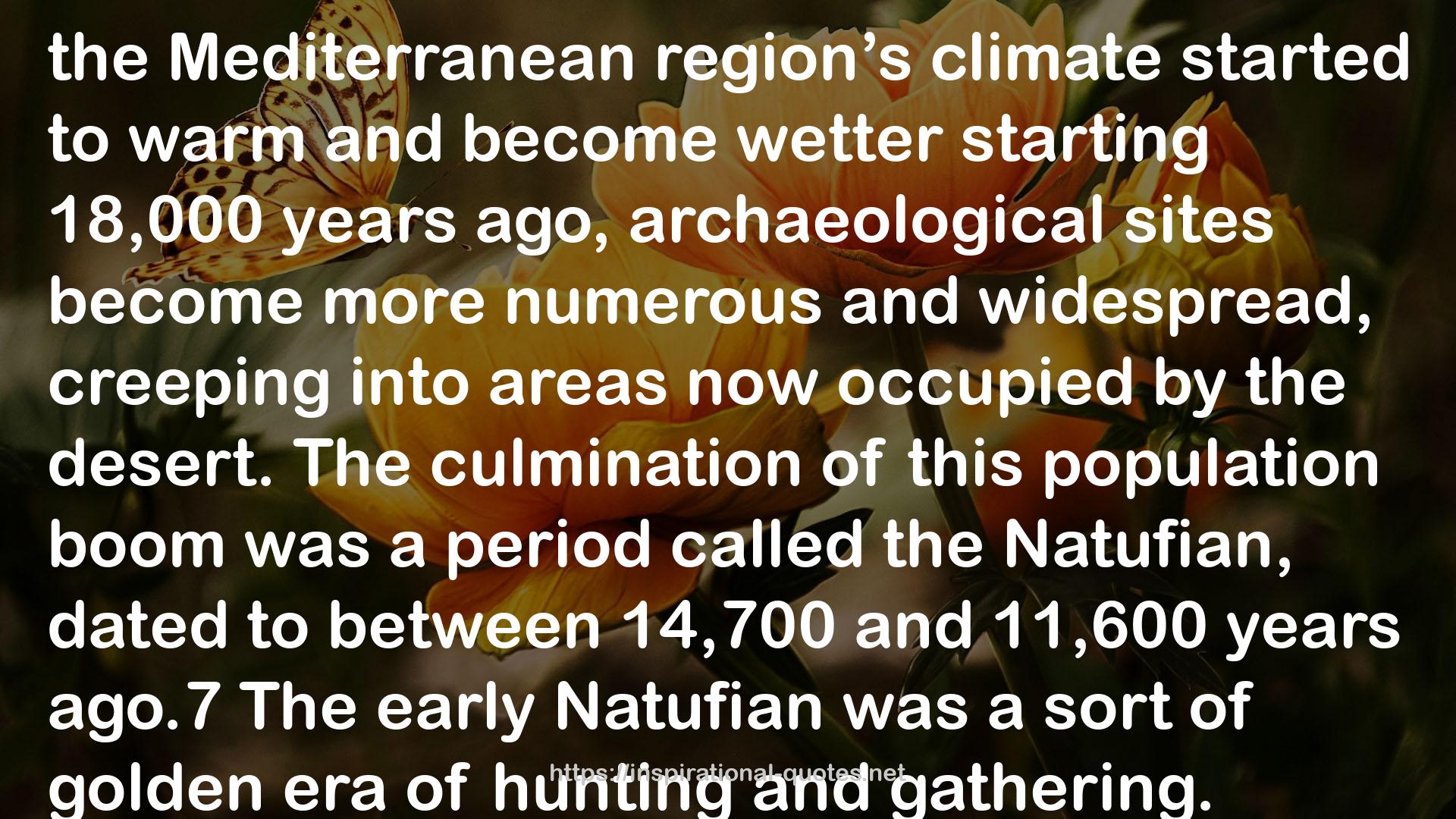" the Mediterranean region’s climate started to warm and become wetter starting 18,000 years ago, archaeological sites become more numerous and widespread, creeping into areas now occupied by the desert. The culmination of this population boom was a period called the Natufian, dated to between 14,700 and 11,600 years ago.7 The early Natufian was a sort of golden era of hunting and gathering. Thanks to a benevolent climate and many natural resources, the Natufians were fabulously wealthy by the standards of most hunter-gatherers. They lived by harvesting the abundant wild cereals that naturally grow in this region, and they also hunted animals, especially gazelle. The Natufians evidently had so much to eat that they were able to settle permanently in large villages, with as many as 100 to 150 people, building small houses with stone foundations. They also made beautiful art objects, such as bead necklaces and bracelets and carved figurines, they exchanged with distant groups for exotic shells, and they buried their dead in elaborate graves. If there ever was a Garden of Eden for hunter-gatherers, this must have been it. But then crisis struck 12,800 years ago. All of a sudden, the world’s climate deteriorated abruptly, perhaps because an enormous glacial lake in North America emptied suddenly into the Atlantic, temporarily disrupting the Gulf Stream and wreaking havoc with global weather patterns.8 This event, called the Younger Dryas,9 effectively plunged the world back into Ice Age conditions for hundreds of years. Imagine "
― Daniel E. Lieberman , The Story of the Human Body: Evolution, Health, and Disease
